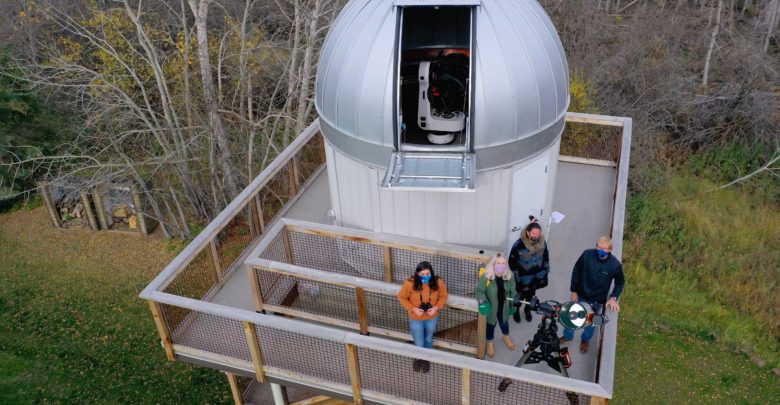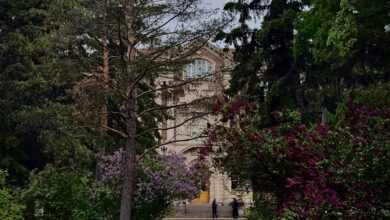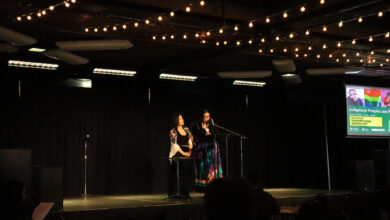New Hesje Observatory allows Augustana to reach for the stars
Donor Brian Hesje hopes the observatory will motivate students to take the time to look up and admire the stars.
 University of Alberta
University of AlbertaA generous donation from a University of Alberta alumnus created the opportunity for Augustana Campus to open a new observatory, providing unique research opportunities for students.
The Hesje Observatory, located at the Augustana Miquelon Lake Research Station, is Western Canada’s first university observatory in a Dark-Sky Preserve. The observatory, opened virtually on January 12, was funded by and named after donor Brian Hesje, University of Alberta alumnus and retired businessman. Hesje donated $500,000 for the facility’s construction.
Hesje said motivating people to question what they can do for the world was his inspiration behind funding the facility’s construction.
“In some way I believe people don’t dream enough,” Hesje said. “They get so caught up in doing things, they forget to think: what could I do?”
“My advice to any student would be to stop and make more time to think about things. Looking at the stars or looking at the sky should open a door to doing that.”
The Hesje Observatory is located in a Dark-Sky Preserve recognized by the International Dark-Sky Association. This preserve is within Beaver Hills, and extends from Miquelon up to Elk Island. Dark-Sky Preserves are areas that make a commitment to reduce light pollution. Glynnis Hood, environmental sciences professor and manager of the research station, described the importance of such areas.
“It’s a tremendous opportunity for having places on the planet where we have really worked hard to try and reduce light pollution,” Hood described.
“With that, we have areas where we can have the opportunity to view the stars and the solar systems in one of the better areas for low light pollution.”
The main telescope in the Hesje Observatory is a Corrected Dall-Kirkham design. This telescope is mounted permanently on a PlaneWave L-series 500 mount. Gerhard Lotz, professor of mathematics and physics described the sharpness of the telescope, which allows for clear images to be captured from far distances.
“It’s got a 17-inch opening, so the light collecting power is about twice what it is for our portable telescope, and it basically collects about 5,000 times more light than can come into your eye,” Lotz described.
“If you had a direct line to Camrose, and the atmosphere was good, and you were looking at a person through this telescope 30 kilometres away, you could actually see their two eyes as separate,” Lotz described.
The telescope is operated by computer, allowing it to be controlled from a distance.
“We can take our computer downstairs to the classroom, and basically control the telescope in comfort down there, and see what the telescope is seeing through the cameras,” Lotz explained. “Ultimately we are able to control this telescope from Camrose as well.”
The Hesje Observatory also contains a portable telescope, the Celestron Edge HD, which is perfect for snapping pictures of a starry sky according to Rae Metrunec, research assistant.
“Our Celestron Edge HD has an 11 inch diameter,” Metrunec described. “This telescope is mostly used for astrophotography, as it has a sturdy tripod, a motorized equatorial mount, excellent optics and an autoguider, all which are necessary to make sure the imaging is good when we are doing astrophotography.”
Peter Berg, chair of the department of science at Augustana Campus, spoke on what this observatory means for the scientific community within the university.
“It provides great and unique research opportunities for students at the Augustana Campus, as well as for other students of the University of Alberta in Edmonton,” Berg explained.
“It’s a really exciting place, it’s bringing together all sorts of wonderful minds and interests into one location,” Hood concluded.




